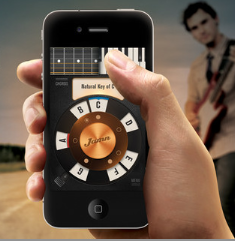by Keith Nelson, Jr.
“You can take their likenesses and voice and … take people that haven’t done concerts before or perform music they haven’t sung and digitally recreate it.” – Nick Smith, President of AV Concepts
“This is just the beginning.” – Ed Ulbrich, Chief Creative Officer of Digital Domain Media Group
AV Concepts and Digital Domain Media Group are the companies responsible for resurrecting (read: digitally re-imagining) the enigmatic hip hop legend Tupac for Dr. Dre’s set at the annual Coachella music festival. Hologram Tupac shoulder bopped and sounded like the iconic man it was recreating and moonwalked like the projected image it was. What’s next? That becomes clearer the more the inner workings of this illusion are explained.
The Tupac “hologram” was not actually a hologram, but a 2-D illusion created by advanced computer graphic technology and 19th century magician tricks. The 150 year old visual effect used, Pepper’s Ghost, usually involves an angled piece of glass reflecting a “ghostly” image of a live actor out of the audience’s view. In the version showcased at Coachella, Digital Domain Media Group employed AV Concepts’s high definition projection capabilities to bounce the image off a reflective surface onto a Mylar screen. A Mylar screen is a highly reflective, lightweight foil which preserves the efficacy of the illusion while pushing the technology to its limits. The use of Mylar screens in illusions is patented by the London-based visual effect company, Musion, who simultaneously projected a Mariah Carey hologram in Germany, Croatia, Macedonia, Montenegro and Poland for German telecommunication company, Deutsche Telekom’s Christmas event in 2011.
The technology definitely garners attention; however is it affordable enough for it to become a sustainable new performance method?
It is no secret that piracy’s negative impact on record sales has forced record labels and artists to place a higher importance on the monetary resource of live shows. For their record-breaking 360 Tour, rock gods U2 employed a 165 ft. tall Claw-shaped contraption which housed the sound system and an enormous video screen in order to make more space for fans to practically surround the stage. This innovation helped make the tour the top grossing tour of 2011 by over $100 million with over $298 million grossed in 2011 alone. However, the $700k+ a day production cost would financially cripple the total gross for 18 of the 25 highest grossing tours of 2011 making it an unsustainable model for most acts. The actual cost of the Tupac illusion is unknown, but AV Concepts President Nick Smith says a similar illusion would cost as low as $100,000 and as high as over $400,000 with approximately four months needed for completion. How interested is the music industry in this innovation? Less than 24 hours after the Coachella performance, the Wall Street Journal reported that Dr. Dre and Digital Domain Media Group are planning to take America’s Most Wanted illusion on tour.
What if a tour was able to happen in one night?
This is where the dots connect.
Less than a week before Tupac was throwing up W’s from the beyond, YouTube celebrated the one year anniversary of their live streaming video service, YouTube Live by announcing, amongst other tidbits, a new way for content owners to make money off their live video streams. According to the official YouTube Partners & Creators blog, under the new monetization policies, a “live event can be claimed in the new video manager like any other video and monetized with in-stream ads or paid options where you can set price by country.” With a Clear Channel Communications monopoly looming (#1 in radio station ownership, concert promotion concert arena ownership) along with dwindling revenues from traditional models, hologram performances could be an attractive option. Consider this: a hologram artist can be projected at multiple venues simultaneously thus potentially being able to perform in front of millions of people in separate attendances while being streamed by tens of millions paying customers. The total audience attendance for U2’s 360 Tour, the highest grossing tour in music history: 2,887,972.
Cha-Ching.
“This is not found footage. This is not archival footage.”- Ed Ulbrich
This is where things get weird. If they can make the image of a man who died three years before Coachella was named Coachella scream “What’s up Coachella!,” what is to stop record labels from simply hiring world class musical talent to create manufactured artists (a la Milli Vanilli)? Could this be record label’s masterful way of ensuring a higher percentage of the live performance revenue? Is there really any possibility too far-fetched? Companies are popping out 50 inch 3D SmartTVs, which can stream online video. How long before you are paying to watch a life-like Beyonce gyrate those holographic hips in your living room?
Stay real, people.
Keith Nelson Jr. is a music appreciator bordering on elitist trying to connect all the dots. He graduated from Syracuse University in 2010 with a B.A. in English & Textual Studies. Tweet at him at @JusAire.

















Comments are closed.